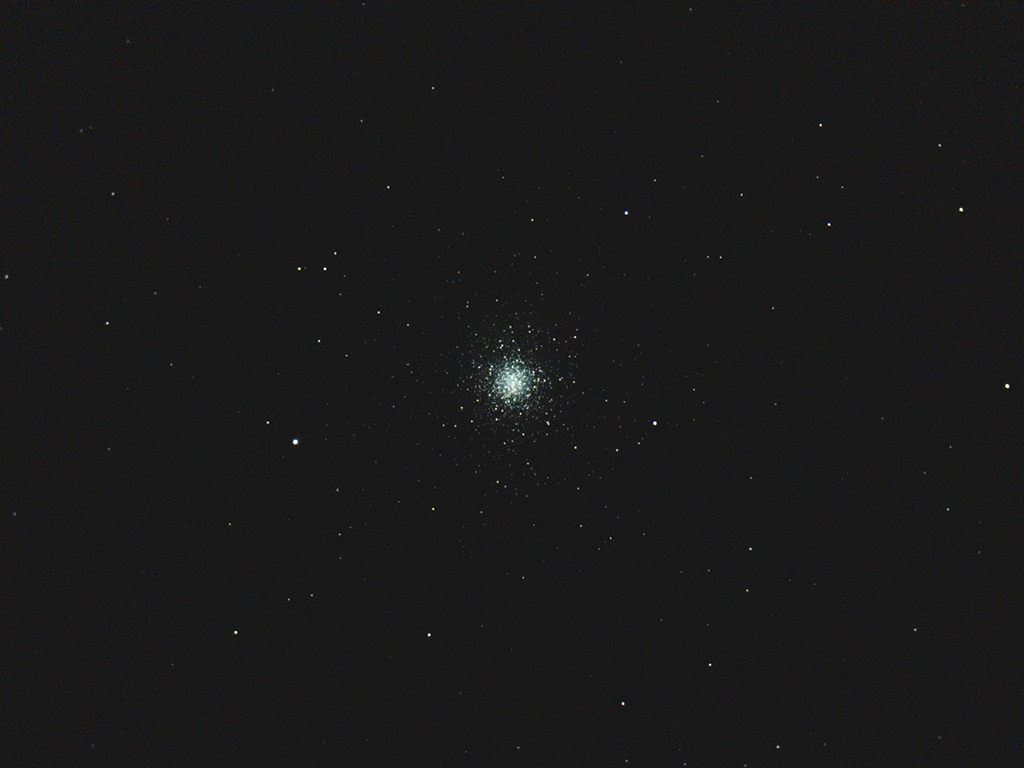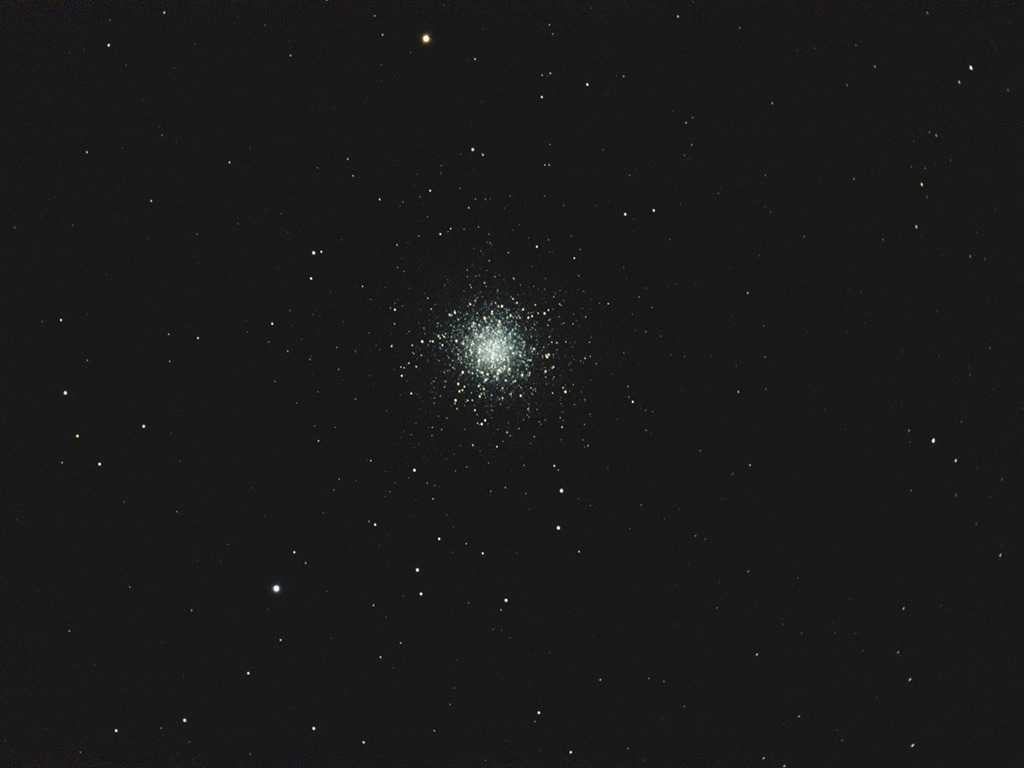
Telescope: LXD75 SC8 @ f/6.3, LX65 mount, altaz mode
Camera: Baader modified Canon 600Da, interval timer
Filter: GSO IR Blocking Filter
Guide scope: None
Exposure: 34x10sec, ISO 1600, saved as RAW
Darks: Internal (Long Exposure Noise Reduction On)
Flats: 32×1/25sec, Tee shirt flats taken at dusk
Average Light Pollution: Red zone, Bortle 8, poor transparency, moonlight
Lensed Sky Quality Meter: 17.5
Stacking: Mean with a 1-sigma clip.
White Balance: Nebulosity Automatic
Software: Deep Sky Stacker, Nebulosity, Photoshop
M14 is a relatively large globular cluster, though it is rather faint. The reddish color gives a clue – it lies in the plane of the Milky Way where there is a fair amount of dust between us and the cluster giving it a beautiful amber hue similar to M22.
This is part of a series of images that I am taking to explore deepsky imaging using fairly basic equipment and techniques. A nice feature of this approach is that it is so simple and easy that you can cover a lot of ground and at the very least use these images to survey potential targets for more in-depth imaging. Looking at my records I found that I have imaged M14 only once before, somehow over-looking this wonderful cluster.
M14 is currently in the southwest as the sky darkens.









Recent Comments